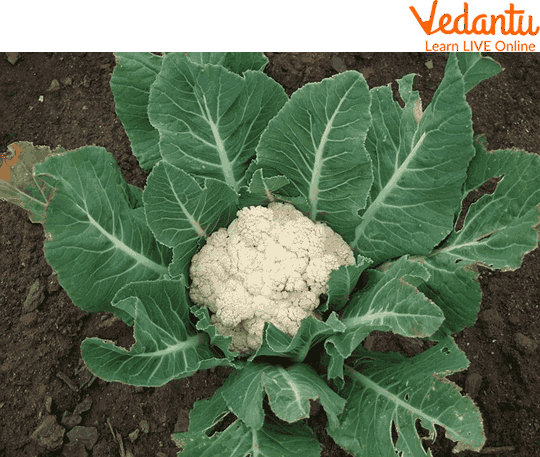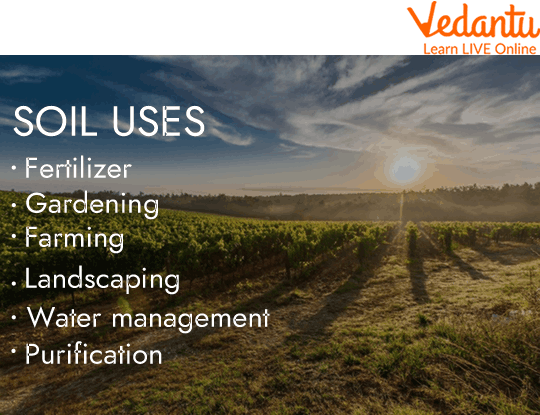




An Overview of Soil, Its Properties and Importance
Since everything (including life) arises from and returns to the soil, the soil is the most valuable resource in this cosmos. The study of soil is crucial for humans because it provides food for millions of living things, both vegetarian and non-vegetarian, who depend on it for survival. Since soil is the largest storehouse of carbon, it is known as the "backbone of life," and any changes to the soil make life more challenging. We will be learning about the uses of soil in the article.
What is Soil?
Soil is a thin layer covering the earth's surface. The material which this thin layer is made of is known as soil. It is made from weathering rocks. It is a mixture of many particles which include minerals, water, plants, animals, etc.
Based on texture, soil can be classified into three main types:
Sand
Silt
Clay
How is Clayey Soil Useful for Crops?
Wheat and other crops are cultivated in fine clay soil because they are fertile and rich in humus. Loamy soils are used to cultivate lentils. In sandstones or loamy soil, cotton is grown. It can hold a lot of water effectively. The organic stuff is plentiful in clayey soil. Cereals like wheat grow well in loamy and clayey soils. Clayey soil's ability to store water helps crops like rice, which need more water to develop, and flourish. Humus, which enhances soil structure and offers water and minerals, is the organic component of soil. The inorganic component of soil is composed of rock that has been gradually broken down into smaller particles of varying sizes, including sand, silt, and loam.
One of the major uses of clay soil is that it retains the soil moisture and is rich in organic minerals so it is considered good for growing crops like wheat, gram, paddy, etc.

Crop in Clayey Soil
What are the Various Uses of Soil?
The various uses of soil include:
Inorganic particles that are weathered from rock and contain a variety of minerals make up soil.
They serve as a platform for plant growth, which is then utilised to make things like food, clothing, toys, and pharmaceuticals.
It contains a variety of essential nutrients for plants.
It facilitates the construction process.
It serves a variety of religious reasons.
Clay is used to making pottery and ceramics.
Additionally, dirt is an ingredient in beauty cosmetics.
It is employed in the production of skin ointments, anticancer medications, TB medications, and antibiotics.
It is used in wastewater treatment facilities.
Sometimes, the soil is also used for cleansing.

Uses of Soil
Why is Soil Important?
Soil is a very crucial component for both living beings and the environment. Soil provides us with the necessary minerals required to live. It puts up food on our plates. It supports the plants which are the reason for providing us with oxygen. Now, let’s answer the question: how is soil important for living beings and the environment?
A World That is Fed by Healthy Soil
Food is derived from the soil. The fundamental nutrition cycling for plants and animals is provided by soil, which is made up of minerals, water, air, and organic matter. Soil also serves as a foundation for many essential ecosystem functions, including the production of feed, fuel, fibre, and medical products.
Like Natural Gas or Oil, the Soil is a Limited Resource
Since soil cannot be replaced, its loss cannot be made up in the course of a human lifetime. One centimetre of soil can take hundreds of years to build from the parent rock, but then that centimetre of topsoil can be washed away by erosion in just one year.
Climate Change Can Be Lessened by Soil
More than twice as much terrestrial organic carbon is stored in the soil as there is in vegetation. Soil alleviates climate change via carbon absorption and a decrease in greenhouse gas emissions, in addition to assisting in the provision of clean water, preventing desertification, and enhancing resilience to flood and drought.
Soil Is Vibrant and Lively
Soil contains 25% of the biological diversity on the globe. In addition to the billions of bacteria, fungi, and protozoans present in the soil, there are also thousands of insects, mites, and worms.

Owls of the Zoo
Summary
In this article, we have learnt various important facts about soil. We also learnt that soil is where plants get their mineral nutrients. The loose outer layer that covers the earth's surface is known as soil. The chemical makeup of the soil, terrain, the existence of living things, the weather, and time all affect how healthy the soil is.
We learnt that the properties and fertility of soil can also be altered by agricultural history and practice. Inorganic mineral matter, organic matter, water and air, and living life are the four main components of soil. Here, in this article, we have now learnt why soil is important for us, and what the soil provides to us. Soil is very crucial and now we know the reasons.
FAQs on Uses of Soil
1. What is the nature of soil?
The term "soil nature" refers to the elements, properties, and ability to support life, retain water, and supply nutrients that makeup soil in its natural environment.
2. What does science tell us about soil?
Soil is a combination of minerals, organic components (dead and live organisms), air, and water. Soil is one of the most dynamic and significant natural resources on our planet due to the extraordinary interactions between these four components.
3. What makes soil so crucial?
Several essential services are provided by soil for both people and the environment. Our food comes from the soil, which also cleans our water, keeps us safe from flooding, and fights drought.









